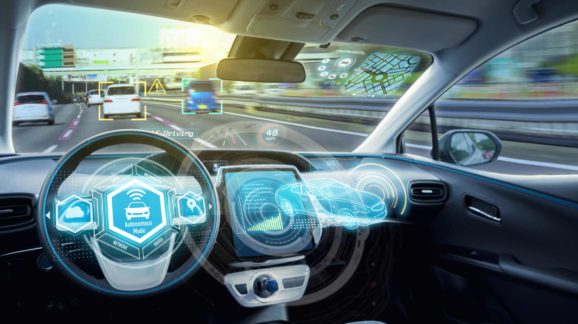Outdated Auto Safety Regulations Threaten the Self-Driving Revolution
Self-driving cars should be welcomed for their substantial safety and mobility gains for the traveling public, especially the elderly and disabled. But the federal government’s failure to modernize auto regulations is already denying consumers safer and superior products, and this problem will only grow larger as automated driving systems near the deployment stage.
Congress has long recognized that federal regulations should be informed by technical standards developed outside the government, as officials generally lack engineering expertise. Bipartisan bills—the Self Drive (Safely Ensuring Lives Future Deployment and Research in Vehicle Evolution) Act passed by the House, and the AV Start (American Vision for Safer Transportation through Advancement of Revolutionary Technologies) Act pending in the Senate—both recognize that the federal government should continually update its automated vehicle definitions to reflect the industry’s best available technical knowledge. Specifically, both bills would codify a Society of Automotive Engineers standard defining levels of vehicle automation in law and require the US Department of Transportation to consider updating those regulatory definitions whenever the underlying SAE standard is revised.
But this legislation applies to a single standard incorporated into regulation. There are 73 federal vehicle safety regulations that incorporate 257 standards, with half of them dating back before 1980. Nearly all federal auto safety regulations codify technical standards that are years, if not decades, out of date.
The problem of obsolete, mandated motor vehicle standards inhibiting safer technologies matters. For example, adaptive driving beam (ADB) headlamps have been available for years in Europe and Japan. With ADB headlamp setups, an onboard camera detects oncoming or leading vehicles, whose drivers could otherwise be temporarily blinded by headlamp glare, and raises or lowers the ADB lighting—made up of dozens of LED bulbs—accordingly.
However, in the United States, regulations relying on decades-old technical standards that require headlamps to have distinct high- and low-beam settings make this safety-enhancing technology verboten. The same lighting regulation also prohibits the automatic engagement of emergency flashers, a technology necessary for self-driving cars to display hazard warnings to other road users.
The Department of Transportation has indicated that it will begin work toward ADB headlamps as early as this June, but it will take years to finalize that effort, as auto safety regulatory proceedings routinely take a decade or longer to complete. This does not bode well for self-driving cars. Research commissioned by the National Highway Traffic Safety Administration in 2016 found that up to 45 percent of current federal auto regulations may pose major roadblocks to the development and deployment of automated vehicles.
The federal government must begin modernizing its auto regulations sooner rather than later. The way to initiate this process is similar to the single standard adoption proposal in both the House and Senate automated vehicle bills. Congress would require that whenever a technical standard incorporated by the Department of Transportation into auto safety regulation is revised, the department must either adopt the new standard by making conforming amendments to relevant regulations, or articulate a safety or legal basis for the rejection.
Of course, this wouldn’t be a cure-all. As noted, substantive rulemaking proceedings take years to complete. But this reform would refocus the National Highway Traffic Safety Administration on its core function of administering competent vehicle regulations, as required by the 1966 law that created this regime, rather than unnecessary discretionary activities (such as a recent costly proposal to mandate that all cars talk to one another using an obsolete government-specified communications protocol). It also would provide greater transparency into the often murky world of government use of private standards in regulation.
The proposal’s appeal ought to be bipartisan. Republicans skeptical of government regulation should want regulations to do the least amount of harm, and requiring automakers to certify their products to obsolete standards is certainly harmful. Democrats who support regulating vehicle safety should oppose rules that are objectively nonsensical and regressive in the face of new technology, such as the lighting restrictions mentioned above.
Updating obsolete safety regulations will ensure that federal rules allow for the development of technologies that can save tens of thousands of American lives every year. Congress just needs to make it happen.
Originally published to WIRED.
